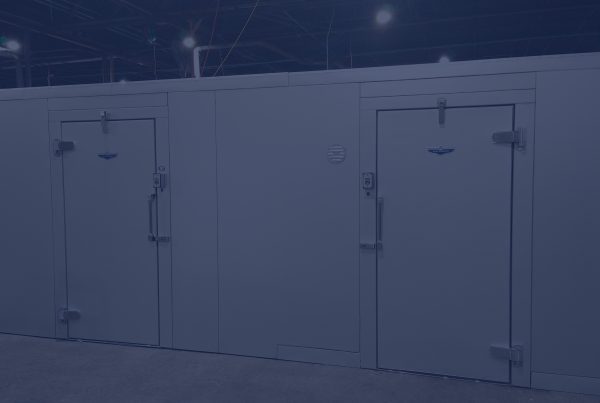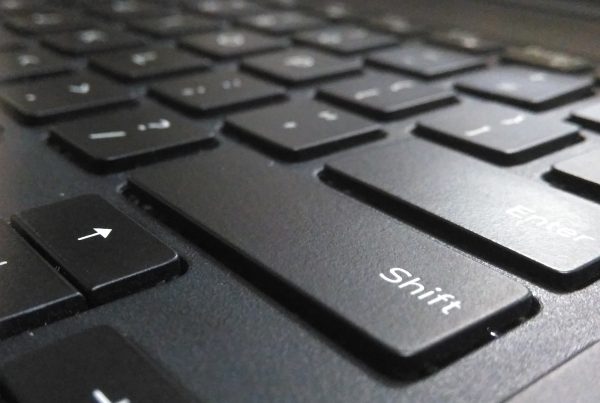I’m Mitch Byrne. I have been working in the Refrigeration Trade for over 16 years. I know from experience that commercial refrigeration maintenance can extend equipment life by years & save big on electrical consumption. This article will explain the importance of Commercial Refrigeration Maintenance. It will also outline basic DIY Maintenance as well as professional clean & checks done by a contractor. It is possible for equipment owners to perform some basic maintenance tasks between contractor visits.
Commercial Refrigeration Maintenance is critical, especially when it comes to Walk-In Coolers, Freezers & Ice Machines. This is especially true when it comes to line coolers. All refrigeration needs to expel heat. The majority of units do this through an air cooled condenser coil. This is done by drawing air through the coil. This causes dust & debris to form fairly quickly on the condenser coil. Failure to clean condenser coils on a regular basis will increase electrical consumption & lead to major system component failure such as burnt wiring, a failed condenser fan motor, a restricted metering device or a failed compressor. These are some, but not all of the possible consequences of lack of maintenance. Without a doubt poor maintenance will decrease the lifespan of equipment & increase electrical consumption.
There are things you can do between contractor clean & checks that can really help. The following is a checklist of tasks you can perform to help extend the life of your commercial refrigeration equipment.
- Visually inspect the condenser coil on self contained refrigeration. Often the condenser coil is behind a cover at the top or bottom of commercial coolers & freezers. Condenser coils can also be located at front right or left on a unit & also at the back of a unit. The condenser cover can usually be removed with a Philips screw driver. Occasionally a ¼” or 5/16” nut driver is needed to remove cover. Pictured are a couple types of coolers & condensers.

 Check door seals (gaskets). Your refrigeration unit has worked hard enough cooling the conditioned space. Don’t let warm kitchen air seep in through torn or split gaskets. Slowly inspect all four sides of door gaskets for rips or tears. Make sure the gasket actually seals well on all four sides. Gently clean gaskets with a mild soapy water to remove food debris.
Check door seals (gaskets). Your refrigeration unit has worked hard enough cooling the conditioned space. Don’t let warm kitchen air seep in through torn or split gaskets. Slowly inspect all four sides of door gaskets for rips or tears. Make sure the gasket actually seals well on all four sides. Gently clean gaskets with a mild soapy water to remove food debris.- Check any drain line outlet visible. Usually condensate drains are located at the base of coolers in the back on refrigeration units that have the compressor on the bottom. On units that have top mounted compressors the drain may also be located at the top of unit. Clear end of drain. The following is a tip on how to keep cooler & freezer drain lines clear. You may insert a straw into drain outlet. Wrap a damp cloth around where straw goes into drain. Blow air into straw & up into drain while firmly holding straw in drain with damp cloth. This will help clear restrictions. The drain should also be blown out by a contractor a few times a year.
I believe that most convenience store or restaurant operators would do well to check condenser coils, gaskets & drain lines in between contractor scheduled clean & checks. I recommend checking these three things around once a month at minimum. I also think that having a professional maintenance of equipment a minimum of twice a year is the best way to increase equipment reliability, longevity & efficiency.
A contractor can quote a maintenance plan by doing an equipment count. Professionals will clean the coils & drains far better than an end user can. This is important for proper operation of equipment. The following is a comprehensive list of the types of things that should be checked & serviced during a contractor preventative maintenance visit.
- Pressure cleaning of all air cooled condenser coils
- Pressure cleaning of all drains
- Temperature check
- Cycling check
- Refrigerant level check
- Inspection of door gaskets / seals
- Inspection of hinges & or automatic door closers
- Oil motors or bearings when oil ports exist
- Check unit thermometer for accuracy
- Check unit insulation
- Inspect unit wiring
- Inspect unit compressor
- A detailed report on each unit along with make, model, serial number & temperature
- A detailed list of repairs found to be needed
If this article has been useful the following Northeast Cooling LLC blogs may be of interest as well.
- Refrigeration Maintenance Pays: A Client Lesson
- DIY Commercial Refrigeration Maintenance Inspection
- Spring Cleaning For Commercial Refrigeration Equipment – Comprehensive Maintenance Checklist
Article by +Mitch Byrne




Do you recommend a spray that will eat dust? We are a beverage company with True coolers in many different locations.
No, there’s no product that we officially recommend for this.
I think you are absolutely right that regular inspections are key. An ounce of prevention is worth a pound etc. I recommend doing a basic check on equipment at least twice a month.
Last month I bought really fancy refrigerator. I should say that I do not know many things about the refrigerator and I tried to buy the most functional. I hope that everything will be OK with the maintenance. Thanks for the article! Biggin Hill Carpet Cleaners Ltd.
Thanks for the article! If you’re looking for commercial refrigerators, there are a wide variety of models on the market to chose from.
Thank you for the great tips. Do these tips apply for all commercial refrigeration units? I bought mine in the Sacramento area.
Thank you again for the post. Do you have a checklist for commercial refrigeration purchases in the Sacramento area or any other?
Hello – Do you have any suggestions for buying commercial refrigeration in the Sacramento area on black Friday or other areas? Thanks!
F
Thank you again for the great post. Do you have any recommendations for commercial refrigeration purchases in the Sacramento Area post black Friday. Thank you!
Haalulejlh! I needed this-you’re my savior.